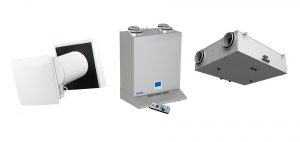Uncategorized
We are now a member of the Australian Passive House Association!
Universal Fans is proud to announce that we are now a member of the Australian Passive House Association. Our commitment to sustainability aligns perfectly with the Passive House movement. We strive to provide products and ventilation solutions that are sustainable and offer several products which will help you meet the passive house standard.
The Australian Passive House Association is a not for profit organisation working to promote the passive house standard in Australia.
Passive House is a rigorous voluntary standard for energy efficiency in a building. It encompasses five principles which designers and builders can use to radically reduce a building’s ecological foot print. Buildings which meet the standard require minimal energy for heating and cooling. As the idea gains popularity across the world, more buildings meet the standard each day. There are over 40,000 Passive House buildings throughout Europe, America, and Australia. The movement is still young in Australia but there are a lot of opportunities to put the idea into practise here.
APHA’s mission has three parts:
- Promote the Passive House standard in Australia by raising awareness through education.
- Support Passive House practitioners in Australia by providing information and opportunities to network.
- Research issues including construction, climate and regulation. These issues relate to implementing the Passive House standard in Australia.

The Passive House Standard
“Passive” buildings are made to use the least amount of energy possible. Most Australian houses don’t meet the standard because they are not airtight. Buildings which meet the standard are built with the following principles in mind:
Insulation:
Using insulation to separates temperature-controlled (inside air) from outside air by creating a barrier.
Passive House or “High performance” windows:
Most Australian houses have single glazing on the windows but this can undo the effect of insulation. Using double or triple glazing will help keep the warm air apart from the cold.
“Thermal Bridge” Free Construction:
Gaps in the insulation will make “bridges” for heat to come through walls. Some building materials, like metal, will also act like a “bridge”. If there are too many thermal bridges in your building, it will be hard to keep warm inside. If you are building or renovating, then look for ways to remove these “bridges”.
Air-tightness:
Stopping air leakage is the easiest way to use less energy. For example, a heater warms the air in the room. If the warm air flows out the window, then cool air will come in to replace it. To keep the room warm, you will need to run the heater for longer. Obviously, running the heater for longer will use more energy. You can stop the air leaking by sealing gaps around windows, doors and vents.
Mechanical Ventilation with Energy Recovery or Heat Recovery:
Following the first four principles will prevent the building from leaking. That means when you run a heater the warm air won’t leave the building, so you can run the heater on a lower setting or for a shorter time. Unfortunately, a building that doesn’t leak won’t allow fresh air in either. Opening a window will allow the heated air to escape. So how do you let fresh air inside without cooling your home down and turning your heater up?

This is where we come in. We offer two types of ventilation systems to solve this problem: Energy Recovery Ventilation (ERV) and Heat Recovery Ventilation (HRV).
Both types of units allow air to flow in and out of the building. ERV systems transfer heat and humidity from the outgoing air to the fresh air. This minimises how much the fresh air will change the temperature and humidity inside. HRV units are similar, but they only transfer heat energy, not humidity. Running one of these systems will make an airtight home comfortable. Even though they use some energy, these systems are more efficient than a heater or air conditioner on their own. And because you won’t be running the heater or air conditioner for as long, you won’t use as much energy on either of those appliances.
Because we specialise in ventilation we can help you meet the Passive House standard. Speak to us about mechanical ventilation with either heat or energy recovery. If you would like to learn more about the ways we can help,then take a look at our page about Heat Recovery Ventilation.

